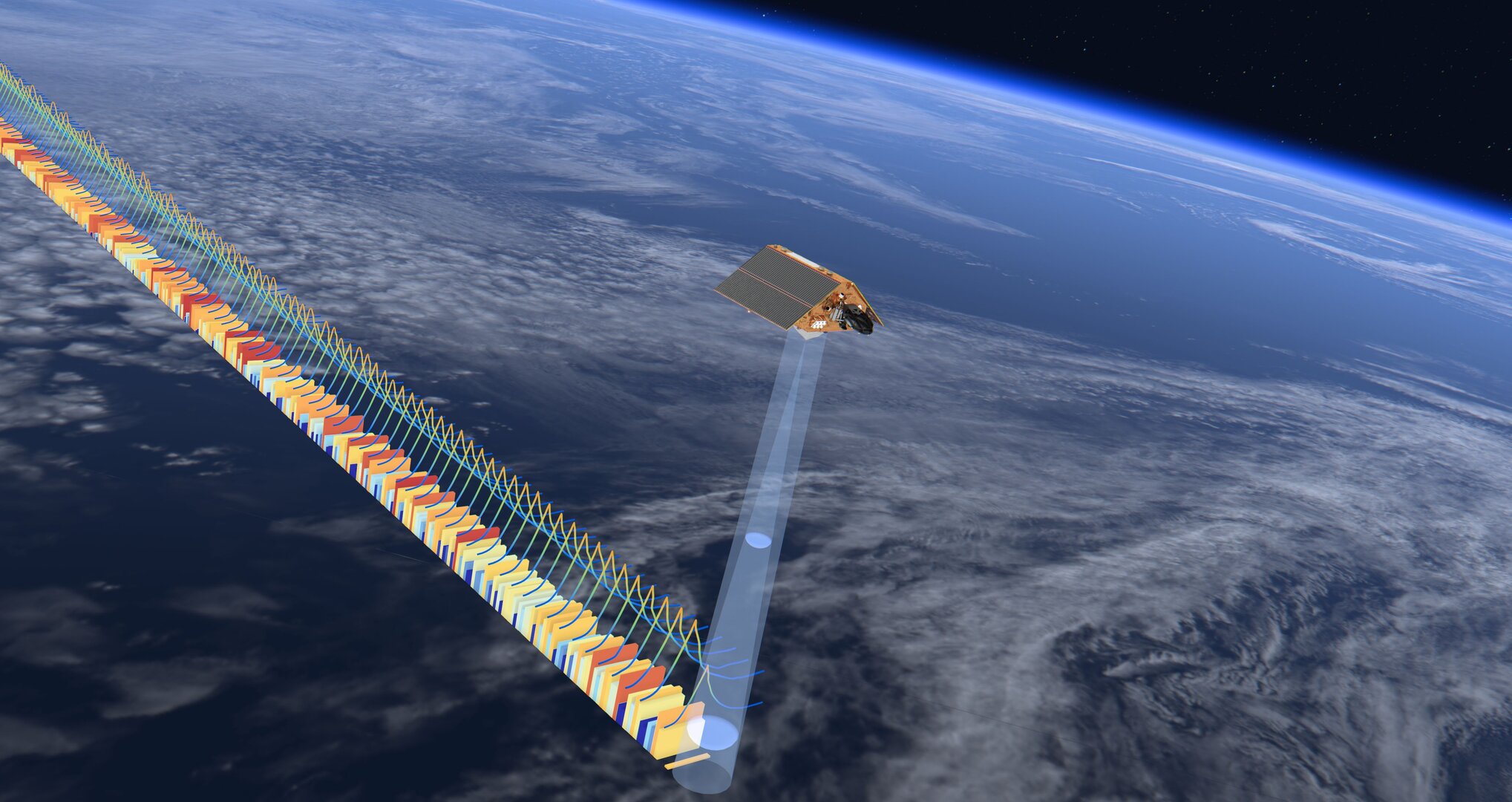How it works
The Copernicus Sentinel-6 Poseidon-4 dual-frequency (C-band and Ku-band) radar altimeter uses an innovative interleaved mode that has improved performance compared to previous satellite altimeter designs.
A radar altimeter derives the height of the satellite above Earth by accurately and precisely measuring the time it takes for a transmitted radar pulse to reflect from Earth’s surface. The returned echo pulse from the sea surface provides a waveform that is processed to determine sea-surface height (from the radar range), the significant wave height (from the slope of the waveform leading edge) and the surface wind speed from the ocean roughness (determined from the strength of the power returns).


Access the video
Sentinel-6 uses radar pulses that are transmitted and received using a timing arrangement that allows both conventional ‘pulse-limited’ (low-resolution mode) data to be acquired simultaneously with high-resolution ‘delay-Doppler’ measurements.
This arrangement allows unfocussed synthetic aperture radar (SAR) data processing to be performed where the altimeter synthesises a large antenna as it flies forward by exploiting the Doppler characteristics of the return echoes.
The processor then steers synthetic azimuth beams to specific locations on Earth’s surface to build a ‘stack’ of waveforms that can be processed to achieve better performance. Unfocussed SAR processing improves the precision of sea-surface measurements by averaging the stack of waveforms to reduce noise and improves the along track resolution from several kilometres to about 300 meters.
SAR processing requires a much larger amount of data than conventional altimetry and the satellite implements a dedicated onboard processor to reduce the data rate that will be sent back to ground by a factor of two.
The unique capability of the Copernicus Sentinel-6 Poseidon-4 altimeter is designed to ensure enhanced continuity with the long time series of measurements from the Topex Poseidon and Jason series of satellite altimeters.
In tandem
To make sure that differences between the historical time series and the new data from Copernicus Sentinel-6 Michael Freilich are fully understood, a 12-month tandem flight takes place shortly after launch in which Sentinel-6 flies 30 seconds in time behind its predecessor Jason-3, following the same ground track.
The data acquired during the tandem flight is used by scientists to compare data from the Jason-3 altimeter operating in low resolution mode and Sentinel-6’s Poseidon-4 that provides both low-resolution mode and high-resolution SAR processed measurements. This comparison allows Sentinel-6 to extend the long-time series of mean sea-level measurements from altimetry with confidence.










